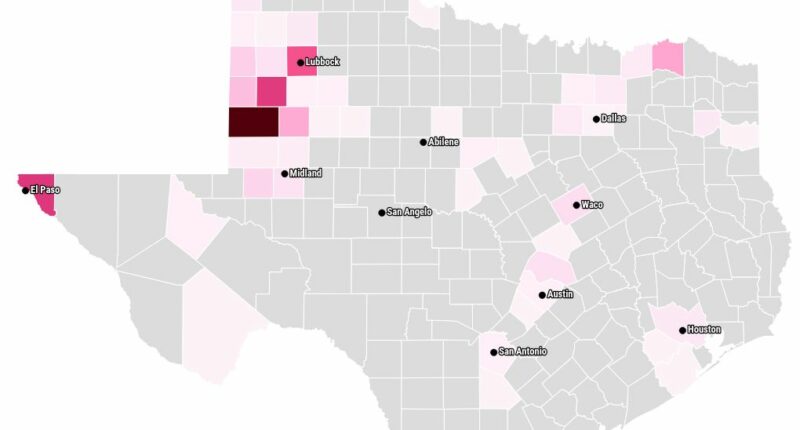Share this @internewscast.com
AUSTIN, Texas (KXAN) The deadly measles outbreak in West Texas has ended seven months after the first cases were reported, the Texas Department of State Health Services said Monday.
A total of 762 cases have been confirmed since late January, more than two-thirds of which were in children. No new cases have been reported in the past 42 days in any of the counties that “previously showed evidence of ongoing transmission,” DSHS said in a press release.
A measles outbreak is considered over after 42 days with no new cases because that’s double the disease’s maximum incubation period, the amount of time it can take between when a person is exposed to measles and when they get sick.
Over the course of the outbreak, 99 people were hospitalized, and two children died.
The majority of cases, 414, were reported in Gaines County, southwest of Lubbock. At least one case connected to the outbreak was reported in 37 counties. Unconnected cases have also been reported in 13 other counties, including Hays, Travis and Williamson. In total, more than 800 cases have been reported in Texas this year, including those not connected to the outbreak.
“I want to highlight the tireless work of the public health professionals across the state who contributed to the containment of one of the most contagious viruses. We arrived at this point through a comprehensive outbreak response that included testing, vaccination, disease monitoring and educating the public about measles through awareness campaigns,” DSHS Commissioner Jennifer Shuford said. “I also want to recognize the many health care professionals who identified and treated cases of a virus that most providers had never seen in person before this outbreak.”
DSHS stressed that additional cases in Texas are likely, “since there are ongoing outbreaks of measles in North America and around the world.”
Experts have pointed to falling vaccination rates in recent years as a cause of the rise in cases.
“Measles used to kill, you know, so many children, and we’re starting to see outbreaks again because parents are not getting their kids vaccinated,” Dr. Dale Bratzler, the dean of the University of Oklahoma’s Hudson College of Public Health, told Nexstar’s KFOR.
Amesh Adalja of Johns Hopkins University, speaking with the Agence France-Presse, had also said the Gaines County area in Texas had among the “lowest rates of vaccination in the state” which he likened to “kindling for such outbreaks.”
“I like to think of this like a forest fire with sparks spreading out,” Dr. William Moss, an epidemiology professor at the Johns Hopkins Bloomberg School of Public Health, said during a briefing earlier this year. “If those sparks land in a community with low vaccine coverage, we’re going to see a larger measles outbreak. If it lands in a community with high vaccine coverage, we may only see one or a few cases.”
The best way to avoid transmission remains two doses of a measles or MMR vaccine, according to the CDC, the World Health Organization, and the majority of infectious disease experts.
Nexstar’s Alix Martichoux contributed to this story.













